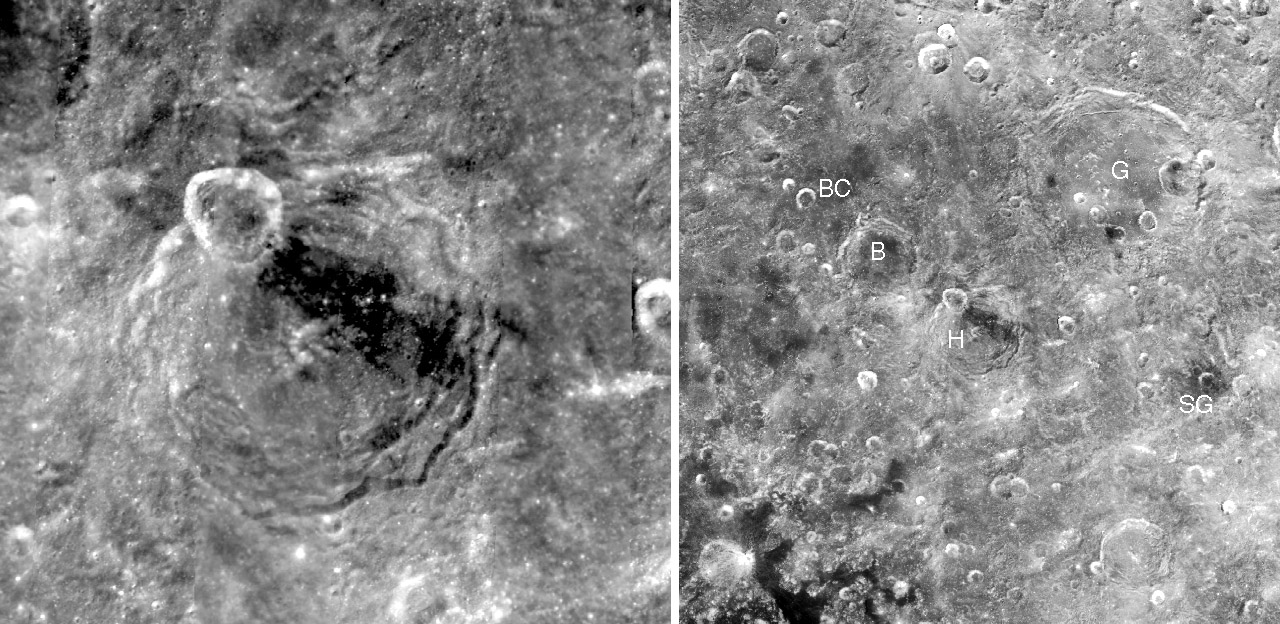Clementine images from Map-A-Planet
While researching yesterday’s LPOD picture by Stefan Lammel of the area near Gauss I noticed that the crater Hahn had a dark streak across it. Since Hahn is a pretty standard Tycho-like crater (even about the same diameter - 84 km vs 85 for Tycho) the streak seemed strange. Looking closely at the Clementine image above I suddenly realized what caused the dark streak. It is down-range ejecta from the oblique impact that formed the large, unlettered crater on Hahn’s NNW rim. The elongation up-range - to the left - is consistent evidence of an oblique impact. The interesting thing is that unlike other oblique impacts, the ejecta is dark rather than bright. Bright ejecta is usually due to the pulverization of lunar rocks, which lightens them. This dark ejecta - which crosses Hahn’s floor, climbs the opposite rim, with some landing outside the rim - is similar to the dark material inside Gauss (G), near Bernouilli C (BC), within Berosus (B) and surrounding Seneca G (SG). Is this stuff pyroclastics? Is it beneath the surface in this area and was excavated by the oblique impact? That seems unlikely because there are aren’t lots of large-ish dark halo craters nearby (except maybe Seneca G). This is still a mystery, but it really does seem like an an oblique impact with dark ejecta!
Related Links:
Rükl chart 16
Yesterday's LPOD: A Crater with Everything
Tomorrow's LPOD: Deep Black & a Little White
COMMENTS?
Register, Log in, and join in the comments.




